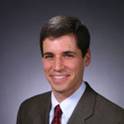
Rapid distortion theory (RDT) is used to examine differential diffusion of active and passive scalars in unsheared, initially isotropic turbulence. RDT is well suited to study differential diffusion because it applies to strongly stratified flows with weak turbulence—that is, the conditions under which differential diffusion occurs. The theory reproduces several key features of the evolution of scalar fluxes and scalar flux spectra observed in direct numerical simulations (DNS). Predictions of the diffusivity ratio match laboratory results well when a parameter of the theory is related to a parameter of the experiments. RDT also allows parameters such as molecular diffusivities to be varied over a wider range than DNS can currently reach. RDT may prove to be a useful tool for computing mixing in weakly turbulent parts of the stratified ocean interior and possibly for parameterizing subgrid scale mixing in general circulation models.
Available at: http://works.bepress.com/chris_rehmann/13/

This article is from Geophysical Research Letters 32 (2005): L10601, doi:10.1029/2005GL022443. Posted with permission.